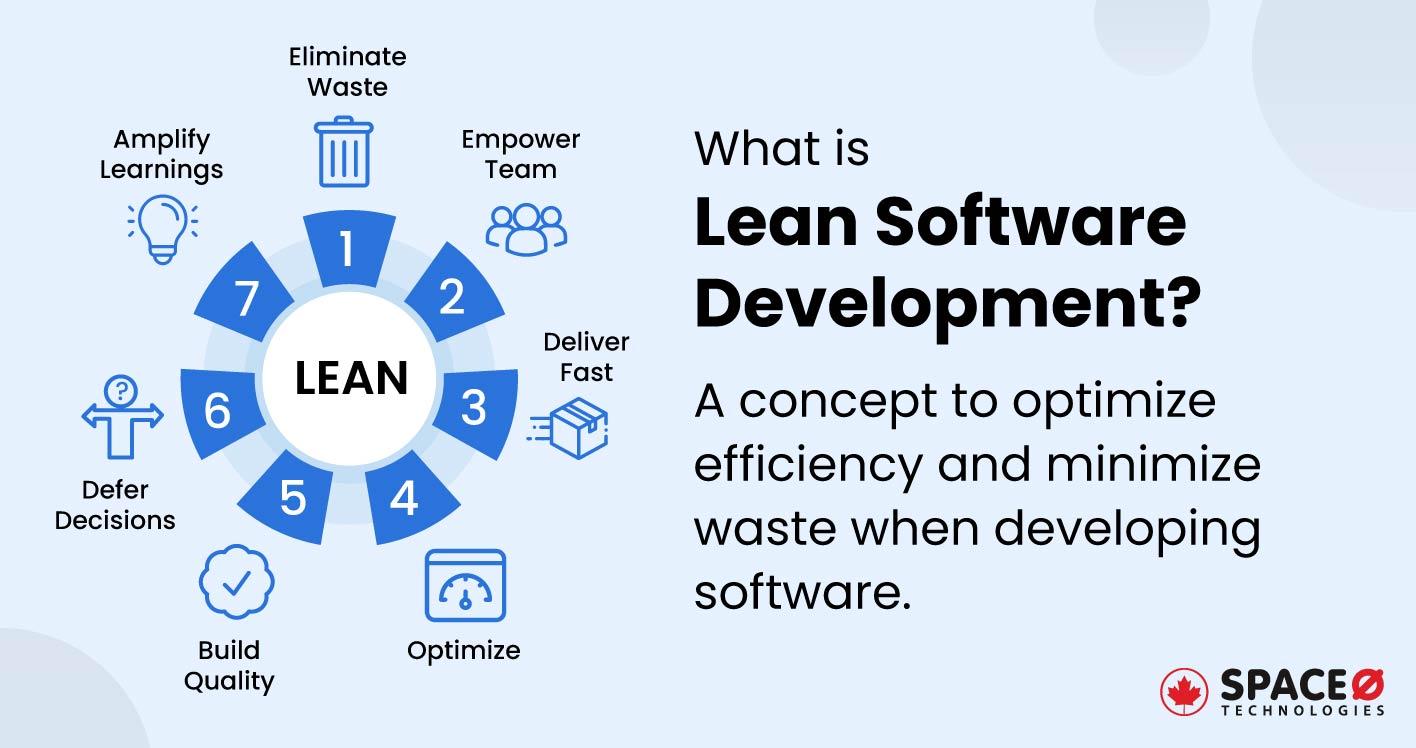
What is Lean Software Development? [Definition + 7 Key Principles]
Lean software development is a structured approach to software development focusing on effectiveness, constant enhancement, and delivering value to customers while eliminating waste.
For example,
Assume you are developing banking software. Instead of creating the full software at once, you begin with the basic concepts, such as monitoring your balance. Once you have this basic part ready, you release it to a group of people and pay close attention to their feedback and suggestions.
Then, depending on what people find useful or not, you add further elements, such as paying bills. This is similar to constructing step-by-step and improving things as you go until you have really amazing software that people appreciate.
If you are looking to develop a software similar to banking using lean software development methodology, and want to know it in detail, here is a complete guide to lean software development. From this guide, you will know the history, challenges, and advantages of lean software in detail.
Table of Contents
7 Key Principles of Lean Software Development
Here are the key principles of lean software development.
Eliminates Waste by Streamlining Processes
Focuses on identifying and removing procedures, activities performed, or features that do not directly add value for the customers. For example, streamlining documentation processes in a software project and avoiding building features users won’t use or try.
Amplifies Learning by Incorporating User Feedback
Highlights the importance of gathering constant feedback and learning from practical experiences. For example, you release a prototype of new functionality, gather user reactions, and modify it based on their input and feedback.
Delay Decisions to Make Informed Choices and Maintain Flexibility
Encourages postponing decisions that are irreversible unless your software development team has gathered sufficient and relevant information. For example, you avoid locking in particular design details in a software project until you have collected enough insights from user testing.
Accelerates Delivery to Ensure Rapid Releases
The goal is to swiftly release functional increments of the software in order to receive user feedback sooner. For example, you launch a basic version of the software first that allows users to access core features, and then you progressively add extra features as per their requirements.
Empowers the Team to Foster Collaboration and Encourage Ownership
Focuses on creating a collaborative environment in which all team members may make decisions and contribute to problem resolution. For example, you allow your developers to take total control of their work and identify how to best implement a specific feature.
Prioritizes Quality Assurance to Ensure Reliability
Quality assurance is prioritized here through continuous testing and integration to guarantee the final product is strong and reliable. For example, you use automated tests to identify and resolve problems early in the development process.
Gain Holistic Insight by Adopting a System Perspective
With this lean principle, you consider the complete system and its interactions, rather than the individual elements. For example, you address the challenges that may hinder the process of developing software.
9 Benefits of Lean Software Development
Here are 9 benefits of lean software development. There is no doubt that lean software provides numerous advantages and is one of the best methodologies for software development. However, if you are interested to know other top methodologies, here is our blog post that will give you detailed information about the top most popular software development methodologies.
Now, let’s discuss the top 9 benefits of lean software development.
- Helps you achieve efficient resource utilization by focusing on resource management and optimizing team capacity.
- Eliminates waste, identifies non-essential elements and focuses on elements that directly contribute to customer value.
- Shorter iterations and fast release cycle allows you to have more frequent updates which enables you to provide new features and stay ahead in the competitive market.
- Creates a culture of clear interaction and minimizes misunderstanding and errors.
- Provides flexibility that allows your team to adjust easily to the changing requirements and market conditions without disruption.
- Drives continuous improvement as teams regularly refine processes, address challenges, and boost efficiency.
- Helps you identify and eliminate the bottlenecks, and reduces delays which create smoother workflows throughout your projects.
- Prioritizes testing, validation, and customer feedback, which results in improved software quality, fewer defects and providing a reliable product that meets your enterprise standards.
- Aligns your features and functionalities with customer requirements and preferences.
Lean development offers a customer-centric approach that focuses on efficiency, value delivery and allows to eliminate waste. This lean approach enables the enterprise to change quickly, ensure quality, and create a software product that matches customer preferences by concentrating on efficient procedures and collaborative teams.
All our projects are secured by NDA
100% Secure. Zero Spam
*All your data will remain strictly confidential.
Trusted by


Bashar Anabtawi
Canada
“I was mostly happy with the high level of experience and professionalism of the various teams that worked on my project. Not only they clearly understood my exact technical requirements but even suggested better ways in doing them. The Communication tools that were used were excellent and easy. And finally and most importantly, the interaction, follow up and support from the top management was great. Space-O not delivered a high quality product but exceeded my expectations! I would definitely hire them again for future jobs!”

Canada Office
2 County Court Blvd., Suite 400,
Brampton, Ontario L6W 3W8
Phone: +1 (437) 488-7337
Email: sales@spaceo.ca




